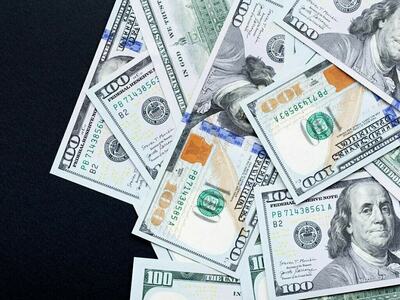Dollar Under Pressure Amid Fed Independence Concerns
The dollar remained near its lowest levels in years against the euro and Swiss franc on Tuesday. This occurred as President Donald Trump’s criticisms of the Federal Reserve stoked worries regarding the central bank’s autonomy.
Market analysts indicated that the dollar’s position has become particularly precarious. Heightened worries persist concerning the U.S. administration’s tariffs, which could potentially unleash a global trade conflict.
Questions surrounding the Fed’s independence pose a threat to the dollar’s status as a reserve currency. Analysts have pointed out the possibility of divestments resulting from what is perceived by many as excessive exposure to U.S. assets.
The U.S. currency’s depreciation accelerated following the announcement from Thailand’s prime minister that trade discussions with Washington, previously set for Wednesday, would be postponed.
President Trump intensified his censure of Fed Chairman Jerome Powell on Monday, branding him a “major loser.” He insisted that Powell immediately lower interest rates, warning of possible economic deceleration.
Adam Button, chief currency analyst at ForexLive, commented that dismissing Jerome Powell would be disastrous for the U.S. dollar and, more broadly, for confidence in U.S. capital markets.
“The market expresses hope for restraint and that the U.S. economy is allowed to sustain its growth,” Button stated.
White House economic advisor Kevin Hassett mentioned on Friday that the president and his staff were still exploring the possibility of dismissing Powell. Powell had remarked the previous week that the central bank could afford to exercise patience when determining policy.
Money markets have factored in a probability of less than 10% for a Fed rate decrease in May and 90 bps by the end of the year, which is generally consistent with the levels observed the previous week.
Francesco Pesole, a strategist at ING, stated that the prevailing worst-case scenario for the dollar involves Powell yielding and implementing an emergency rate reduction. However, he noted that this remains an unlikely event.
Barclays has adjusted its euro/dollar projection to $1.15, assessing the likelihood of removing the Fed chair as a low-probability event. They also suggested that further revisions could soon become necessary should the situation escalate.
China accused Washington on Monday of misusing tariffs and cautioned nations against entering into more comprehensive economic agreements with the United States at China’s expense.
The dollar decreased by 0.03% to 140.820 yen, having previously dipped below the significant 140 level for the first time since mid-September.
The dollar experienced a 0.57% increase, reaching 0.8138 Swiss francs, which is not far from the decade-low of 0.8042 recorded during the previous session.
The euro declined by 0.38% to $1.1467, following a surge to $1.1573 on Monday, marking the first instance above $1.15 since November 2021.
Shusuke Yamada, a forex strategist at BofA Japan, pointed out that the fundamental dynamics vary. He also noted that the yen’s appreciation seems less robust than that of the euro, after mentioning that both currencies had gained approximately 12% against the U.S. dollar.



Comments (0)
No comments yet. Be the first to comment!
Leave a Comment